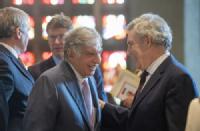WMG News
WMG welcomes Deputy CEO of NatWest Holdings
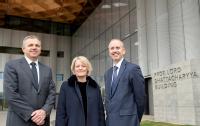 WMG was delighted to welcome Alison Rose, Deputy CEO of NatWest Holdings, to a special SME event at the Professor Lord Bhattacharyya Building at the University of Warwick.
WMG was delighted to welcome Alison Rose, Deputy CEO of NatWest Holdings, to a special SME event at the Professor Lord Bhattacharyya Building at the University of Warwick.
Alison, and her colleague Richard Hill, Head of Automotive and Manufacturing at NatWest, joined CEO of WMG Centre High Value Manufacturing Catapult, Archie MacPherson to meet with a series of SMEs that NatWest and WMG are currently supporting on the ‘Create Test Launch’ (CTL) Programme.
The CTL Programme was launched in 2017, with WMG experts providing hands on advice and support with new product development.
The potential of the Programme was recognised by NatWest, who then partnered with WMG to subsidise ten clients through CTL.
At the event Alison, described as ‘the most influential woman in investment banking’, spoke with passion about the need to prioritise innovation in the boardroom and sparked a lively discussion. Key topics included the challenges of balancing operational pressures against the desire to innovate, the crucial role of good leadership, understanding the innovation process, and support for SMEs in an uncertain political and economic climate.
With 50,000 manufacturing clients nationally, NatWest is keen to promote innovation and leadership in industry. Following the visit, WMG will continue to work closely with NatWest to strengthen the UK manufacturing sector.
Dr Kogila Balakrishnan joins expert line-up at prestigious Chevening Conference
 Dr Kogila Balakrishnan Director of Client and Business Development at WMG, University of Warwick, Dr Kogila Balakrishnan, is on the expert panel on Friday (12th April) at the Chevening Conference 2019.
Dr Kogila Balakrishnan Director of Client and Business Development at WMG, University of Warwick, Dr Kogila Balakrishnan, is on the expert panel on Friday (12th April) at the Chevening Conference 2019.
She joins senior academics from across the world, Chevening Alumni, and inspiring community leaders for Chevening’s 35th annual conference entitled ‘Pushing boundaries and shaping the future.’
Dr Balakrishnan, a Chevening Alumnus herself, will discuss, debate, and share ideas on pushing boundaries and the importance of building international networks, as well as those documented in her recent book ‘Technology Offsets in International Defence Procurement.’ The book is the first to focus on both the theory and practice of offsets, combining developmental economic theories, technology theories, business and management theories and international business practice.
Dr Balakrishnan is responsible for international business development, research in defence management and offsets as well as teaching at WMG. Her specific role is to develop and enhance education and research collaboration focused in Malaysia and South East Asia.
Find out more and book your place here.
Charging ahead at Battery School
PhD students, and future battery engineers, from leading universities across the UK joined us for a special week-long Battery School at our Energy Innovation Centre, for the Faraday Institution, recently.
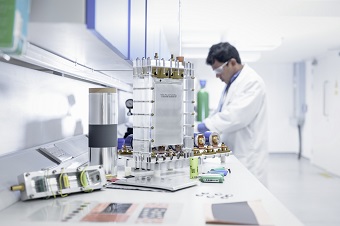 In our role as the Electrical Energy Storage APC Spoke, our battery experts facilitated a mix of lectures and practical sessions covering electrochemistry, applications, future technologies, manufacturing, safety, testing, forensics and battery end of life.
In our role as the Electrical Energy Storage APC Spoke, our battery experts facilitated a mix of lectures and practical sessions covering electrochemistry, applications, future technologies, manufacturing, safety, testing, forensics and battery end of life.
Fran Long, Education and Training Co-ordinator, at The Faraday Institution, said: “The WMG Battery School, at the University of Warwick, gave our PhD students a wonderful week of detailed theory and practice with an abundance of high quality lectures and ‘hands-on’ lab sessions.
“We would like to thank all of the WMG staff involved in making this such a valuable experience for the students. Encouraging the next generation of engineers into battery related careers, is extremely important for the UK’s electrification sector.”
The Faraday Institution is the UK’s independent institute for electrochemical energy storage science and technology, supporting research, training, and analysis. It brings together scientists and industry partners on research projects to reduce battery cost, weight, and volume; to improve performance and reliability; and to develop whole-life strategies from mining to recycling to second use.
The Battery School is part of the Faraday Battery Challenge, along with the UK Battery Industrialisation Centre (of which WMG was part of the winning consortium).
Find out more about our Energy Innovation Centre here.
High-resolution scanning helps secure guilty verdict against child’s mother
Researchers from WMG at The University of Warwick, have used a high resolution X-ray (micro-CT) scanner, a novel 3D imaging technology more commonly employed in industry and materials research, to scan 9 week old Teri-Rae’s rib cage.
The scans images with one thousand times of the detail of a hospital scanner, meaning they were able to detect 2 more microscopic injuries which could otherwise have been missed by conventional medical CT scanners.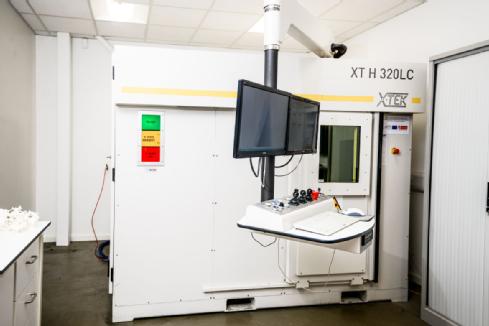
The evidence produced helped reveal a total of ten injuries of varying ages. 3D renderings of these injuries were shown during trial to provide visual context and support the bone specialist’s expert testimony.
This secured a guilty verdict for the charge of manslaughter for Teri-Rae’s mother Abigail Palmer, who has been sentenced today - 4th April 2019.
The work was conducted as part of an ongoing research partnership between Warwick University and West Midlands Police which uses such scanning technologies to support homicide investigations.
Professor Mark Williams of WMG at the University of Warwick comments:
“State-of-the-art 3D scanning technology allowed us to identify multiple fractures to Teri-Rae’s ribs that had occurred over an extended period of time.
“The ability to produce highly detailed 3D images of these shocking injuries that could be presented at court helped establish the truth and show what had happened. It’s an honour for us to provide critical evidence to this case, and to be able to help the police investigate such an unfortunate tragedy.”
West Midlands Police Sergeant Mick Byron from the Child Abuse Investigation Team, comments:
“We were able to show that Teri-Rae suffered 10 rib fractures over a four to 12 hour period between 3am and 11am on 2 January.
“Palmer had been at a pub for six hours on New Year’s Day but claimed to have drank mainly squash, not alcohol, as that would have breached a condition of the Child Protection Plan she was bound by.
“We don’t believe her… and neither did the jury. We suspect she came home drunk, was awoken by her baby in the night and inflicted these terrible images in response to Teri-Rae’s crying.
“Palmer admitted the baby was never out of her sight and never mishandled by anyone else; she offered no plausible accidental explanation for her daughter’s injuries. There was no indication Teri-Rae suffered a bone fragility condition and she was not independently mobile enough to have injured herself.
“Significant force is required to cause rib fractures in a baby… the presence of rib fractures in a baby of this age is indicative of abusive, deliberately inflicted, injury. This was a truly heart-breaking case to investigate, that a little baby’s life was taken by the one person who should have been protecting her.”
New technique to make transparent polythene films as strong as aluminium that could be used in impact resistant glazing, windscreens, and displays
Research led by Professor Ton Peijs of WMG at the University of Warwick and Professor Cees Bastiaansen at Queen Mary University of London, has devised a processing technique that can create transparent polythene film that can be stronger as aluminium but at a fraction of the weight, and which could be used use in glazing, windscreens, visors and displays in ways that add strength and resilience while reducing weight.
In a new research paper entitled “Glass-like transparent high strength polyethylene films by tuning drawing temperature.” Published online today - 1st April 2019 - in the Journal Polymer, the authors show that after carefully selecting the type polythene and by tuning the temperature during the creation of oriented polythene films a balance can be created that produces a highly useful and lightweight transparent material with a significant strength and resilience approaching, and in some ways, exceeding that of metals.
Previously anyone looking to replace heavy and often brittle glasses with a transparent plastic have looked at conventional transparent plastics like polycarbonate (PC) and poly(methylmethacrylate) (PMMA) both of which possess relatively unsatisfactory mechanical performance compared to an engineering material like aluminium.
Current methods of creating high strength plastic films such as hot-drawing of high-density polyethylene (HDPE) can lead to materials that can compete or even out-perform traditional engineering materials like metals.
“The microstructure of polymers before drawing very much resembles that of a bowl of cooked spaghetti or noodles, while after stretching or drawing the molecules become aligned in a way similar to that of uncooked spaghetti, meaning that they can carry more load” explains Yunyin Lin, a PhD student in Professors Peijs and Bastiaansen’s team.
However, drawn polythene materials normally have an opaque appearance due to defects and voids introduced by the drawing process, limiting applications where both mechanical properties and optical transparency are required.
Some success has recently been achieved by using highly specific additives in hot-drawn HDPE materials that can then produce 90% transparency while giving high strength. However, the research team led by Professors Peijs and Bastiaansen have now developed a new post-manufacturing technique for HDPE that endows strength and resilience while preserving transparency without using additives.
The researchers took HDPE polythene sheets and drew out these sheets at a range of temperatures below the melting temperature of HDPE. By tuning the drawing temperature they could achieve a transparency of 90% in the visible range. However, the best balance between strength and transparency was achieved at drawing temperatures between 90 and 110 degrees centigrade.
Professor Ton Peijs of WMG at the University of Warwick said:
“We expect greater polymer chain mobility at these high drawing temperatures to be responsible for creating fewer defects in the drawn films, resulting in less light scattering by defects and therefore a higher clarity”
The highly transparent films possess a maximum resilience or Young’s Modulus of 27 GPa and a maximum tensile strength of 800 MPa along the drawing direction, both of which are more than 10 times higher than those of PC and PMMA plastics. For comparison, aluminium has a Young’s Modulus of 69 GPa and aerospace grade aluminium alloy can have tensile strengths up to around 500 MPa. However, polythene has a density of less than 1000 kg/m3 while aluminium has a density of around 2700 kg/m3, meaning that on weight basis these high strength transparent polymer films can outperform such metals.
Professor Ton Peijs in WMG at the University of Warwick concludes that:
“Our results showed that a wide processing window ranging from 90 °C to 110 °C can be used to tailor the required balance between optical and mechanical performance. It is anticipated that these lightweight, low-cost, highly transparent, high strength and high stiffness HDPE films can be used in laminates and laminated composites, replacing or strengthening traditional inorganic or polymeric glass for applications in automotive glazing, buildings, windshields, visors, displays etc.”
Coventry Cathedral hosts family, friends, and leading figures from business, politics, & education in service of thanksgiving for the life of Professor Lord Bhattacharyya
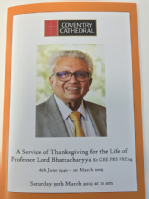 At 11am on Saturday 30th of March 2019, Coventry Cathedral enabled hundreds of people to gather for a special service of thanksgiving for the life of Freeman of the City of Coventry and Founding Chairman of WMG, at the University of Warwick, Professor Lord Bhattacharyya CBE FRS FREng (Born 6th June 1940 – Died 1st March 2019).
At 11am on Saturday 30th of March 2019, Coventry Cathedral enabled hundreds of people to gather for a special service of thanksgiving for the life of Freeman of the City of Coventry and Founding Chairman of WMG, at the University of Warwick, Professor Lord Bhattacharyya CBE FRS FREng (Born 6th June 1940 – Died 1st March 2019).
The Right Reverend Dr Christopher Cocksworth, the Bishop of Coventry, and Coventry Cathedral Precentor and Sub-Dean the Reverend Canon David Stone welcomed Lady Bridie Bhattacharyya, Lord and Lady Bhattacharyya’s three daughters Anita, Tina and Malini, and the Lord-Lieutenant for the West Midlands and his wife Mrs Diana Crabtree, and Lord and Lady Mayoress of Coventry, as well as the rest of the congregation to the Cathedral.
The Bishop gave the address from the pulpit and the service included a number of touching tributes to the life of Professor Lord Bhattacharyya. These were led by a tribute by Miss Tina Bhattacharyya, on behalf of the family.
- Former Prime Minister, The Right Honourable Gordon Brown
- Councillor Abdul Khan, Deputy Leader of Coventry City Council
- Mr Ratan Tata GBE, Chairman Emeritus of Tata Sons, and Chairman of Tata Trusts. (Ratan Tata and Professor Lord Bhattacharyya were both made Honorary Freemen of the City of Coventry at the same ceremony in 2015).
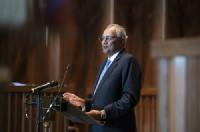
- Mr Venu Srinivasan, Chairman and Managing Director, TVS Motor Company
- The Right Honourable the Lord Baker of Dorking CH PC, Chairman of the Baker Dearing Educational Trust, and former Home Secretary and Secretary of State for Education
- Mr Chandrajit Banerjee, Director General of the Confederation of Indian Industry
- Dr John Ferrie CBE FREng, Member of the Council of the University of Warwick
Later, that same day, the University of Warwick formally unveiled a plinth outside the new £150 million building on the University campus hosting the National 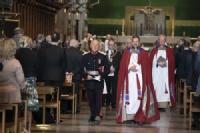 Automotive Innovation Centre, which now proudly bears the name “The Prof. Lord Bhattacharyya Building”.
Automotive Innovation Centre, which now proudly bears the name “The Prof. Lord Bhattacharyya Building”.
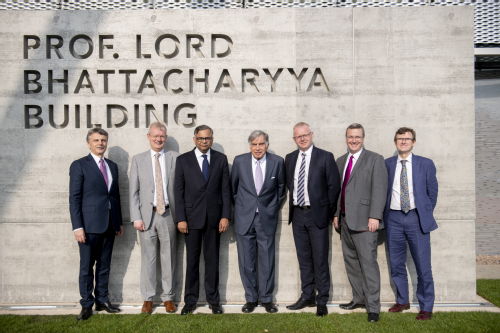
Further information:
- Lord Bhattacharyya’s family and the University of Warwick would like to thank the Bishop of Coventry, Coventry Cathedral, Coventry City Council, the West Midlands Combined Authority, and National Express West Midlands for their help in arranging the service of thanksgiving.
- There have been a great many tributes made by a wide range of leading figures to the life of Professor Lord Bhattacharyya since his passing on 1st March 2019.
You can see many of those tributes here: https://warwick.ac.uk/fac/sci/wmg/about/chairman/obituary/tributes/ and you can find an obituary published by WMG and the University here https://warwick.ac.uk/fac/sci/wmg/about/chairman/obituary/ - The following charity donation page for the National Society for the Prevention of Cruelty to Children has been set up for those who would like to make a contribution in memory of Lord Bhattacharyya: www.justgiving.com/fundraising/professorlordkumarbhattacharyya
- Lord Bhattacharyya served for four decades at Warwick, founding and leading the WMG. To commemorate his life's work, The Professor Lord Bhattacharyya Memorial Fund will create opportunities for young people to thrive, by supporting projects he was passionate about. It will provide funds to enrich the experiences of students at the University of Warwick and the two WMG Academies he was so proud of. In this way, he will continue to play a role in shaping how young people develop the practical and problem solving skills that transform their lives and have a lasting impact on the local and global economy. To contribute to the fund please visit www.warwick.ac.uk/BhattacharyyaFund
Earliest known Mariner’s Astrolabe research published today to go in Guinness Book of Records
Guinness World Records have independently certified an astrolabe excavated from the wreck site of a Portuguese Armada Ship that was part of Vasco da Gama’s second voyage to India in 1502-1503 as the oldest in the world, and have separately certified a ship’s bell (dated 1498) recovered from the same wreck site also as the oldest in the world.
A gunmetal disc excavated from the wreck site of a Portuguese Armada Ship and identified as a mariner’s astrolabe – and the earliest known example - by engineers at WMG, University of Warwick is to be published in the The International Journal of Nautical Archaeology
The astrolabe was discovered by David L. Mearns of Blue Water Recoveries Ltd, who directed the three-year archaeological project in collaboration with Oman’s Ministry of Heritage and Culture
It has been named the Sodré astrolabe after the commander of the ship in which it was found: Vicente Sodré was the maternal uncle of Vasco da Gama and died when his ship, the Esmeralda, wrecked on the remote Omani Island of Al Hallaniyah in 1503.
It will be listed in the Guinness Book of World Records as the oldest mariner’s astrolabe from as early as 1496
The scientific process of verifying the disc as an astrolabe by laser imaging is described in a paper published today by Mearns and Jason Warnett and Mark Williams of WMG at the University of Warwick in The International Journal of Nautical Archaeology.
The Sodré astrolabe which has made it into the Guinness Book of World Records is believed to have been made between 1496 and 1501 and is unique in comparison to all other mariner’s astrolabes.
Mariner’s Astrolabes were used for navigating at sea by early explorers, most notably the Portuguese and Spanish.
They are considered to be the rarest and most prized of artefacts to be found on ancient shipwrecks and only 104 examples are known to exist in the world.
They were first used at sea on a Portuguese voyage down the west coast of Africa in 1481. Thereafter, astrolabes were relied on for navigation during the most important explorations of the late 15th century, including those led by Bartolomeu Dias, Christopher Columbus and Vasco da Gama.
It is the only solid disk type astrolabe with a verifiable provenance and the only specimen decorated with a national symbol: the royal coat of arms of Portugal.
As the earliest verifiable mariner’s astrolabe it fills a chronological gap in the development of these iconic instruments and is believed to be a transitional instrument between the classic planispheric astrolabe and the open-wheel type astrolabe that came into use sometime before 1517.
The thin 175 mm diameter disk weighing 344 grams was analysed by a team from WMG who travelled to Muscat, Oman in November 2016 to collect laser scans of a selection of the most important artefacts recovered from the wreck site.
Using a portable 7-axis Nikon laser scanner, capable of collecting over 50,000 points per second at an accuracy of 60 microns, a 3D virtual model of the artefact was created. Analysis of the results revealed a series of 18 scale marks spaced at uniform intervals along the limb of the disk.
Further analysis by WMG engineers showed that the spacing of the scale marks was equivalent to 5-degree intervals. This was critical evidence that allowed independent experts at Texas A&M University to include the disk in their global inventory as the earliest known mariner’s astrolabe discovered to date.
Prof Mark Williams from WMG, University of Warwick comments:
“Using this 3D scanning technology has enabled us to confirm the identity of the earliest known astrolabe, from this historians and scientists can determine more about history and how ships navigated.
Technology like this betters our understanding of how the disc would have worked back in the 15th century. Using technology normally applied within engineering projects to help shed insight into such a valuable artefact was a real privilege”
David Mearns of Blue Water Recoveries Ltd comments:
“Without the laser scanning work performed by WMG we would never have known that the scale marks, which were invisible to the naked eye, existed. Their analysis proved beyond doubt that the disk was a mariner’s astrolabe. This has allowed us to confidently place the Sodré astrolabe in its correct chronological position and propose it to be an important transitional instrument.”
First look at Coventry’s Innovative Light Rail Vehicle
Engineers and researchers at WMG, University of Warwick, are working alongside Transport Design International (TDI), based in Stratford, to develop a battery-powered, lightweight, rail-based vehicle to operate in Coventry.
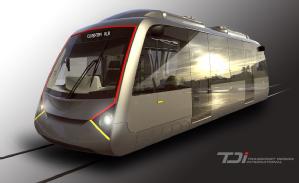 The WMG team, including engineers Darren Hughes and Andrew McGordon, are using their automotive engineering and battery expertise to assist TDI with the design of the vehicle for Coventry City Council, and now have a 3D simulation of the vehicle.
The WMG team, including engineers Darren Hughes and Andrew McGordon, are using their automotive engineering and battery expertise to assist TDI with the design of the vehicle for Coventry City Council, and now have a 3D simulation of the vehicle.
The vehicle will be battery-powered with the long term objective that it will become an autonomous vehicle, allowing more vehicles to operate intelligently and efficiently to meet passenger demand.
It will hold 50 passengers, and the longer term aim is that it will work like the London Underground system, where there is no timetable and people can hop on and off.
The vehicle will be a lightweight design using multiple materials including aluminium, steel and composites.
Due to being battery-powered there will be no overhead power supply which is both costly and has a negative impact to the city-scape. This feature provides future flexibility for operating on other non-electrified routes.
The first-of-a-kind design is available to view in 3D via WMG’s visualisation suite and the first test vehicle will be manufactured by mid-2020. TDI have partnered with Coventry-based Company RDM who will manufacture the vehicle once the design is complete.
A team of experts are also working to develop a new track system.
The Government’s Local Growth Fund through the Coventry and Warwickshire Local Enterprise Partnership (CWLEP) has contributed £2.46 million towards phase one of the research and design of the prototype and £12.2 million has been secured from the West Midlands Combined Authority (WMCA) Devolution Deal to undertake the research and development required to prove the VLR concept.
The WMCA has also allocated specialist resource from Transport for West Midlands to provide technical support, advice and guidance to the project team as the scheme develops.
Dr Darren Hughes, WMG, University of Warwick comments:
“The Coventry light-rail system will be innovative in bringing together technologies from a number of sectors to deliver a low-cost environmentally-sustainable public transport solution for the City of Coventry. Seeing the 3D simulation and envisaging how it will look within Coventry makes us look forward to building the first vehicle that will be ready for testing at a test track facility during 2020.”
 Councillor Jim O’Boyle, cabinet member for jobs and regeneration, comments:
Councillor Jim O’Boyle, cabinet member for jobs and regeneration, comments:
“Very Light rail is a fantastic innovation and it has the potential to transform the way people travel. It will be much more affordable to install than traditional trams, take up far less road space, be able to run alongside traffic and our ultimate aim is that it doesn’t require a driver so it can be a frequent service.
“Coventry has a rich traditional of vehicle manufacturing and now we are leading the way in future transport too. This Very Light Rail work, combined with our work on driverless and connected cars puts us right at the forefront of creating new, ground breaking solutions for future transport needs. They will be safer and more environmentally friendly and I hope go on to provide good job opportunities for local people too.”
Jonathan Browning, chair of the CWLEP, comments:
“Coventry and Warwickshire is at the forefront of battery technology and this exciting scheme emphasises our skills at leading the way in innovation.
“This new technology will bring more jobs and investment to Coventry and Warwickshire and it underlines the value of partnership working to boost the area’s economy.
“It is great news that the prototype of the Very Light Rail vehicle will be built ahead of Coventry being UK City of Culture in 2021 when the area’s profile will be boosted on a global stage.”
WMG researcher takes research to Parliament
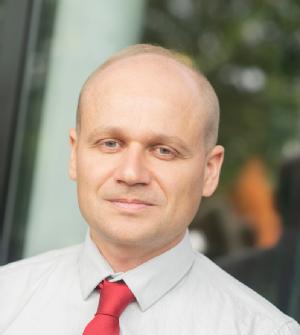 WMG Research Fellow, Sid-Ali Amamra, has been selected to present his work at the prestigious STEM for BRITAIN event on Wednesday 13th March.
WMG Research Fellow, Sid-Ali Amamra, has been selected to present his work at the prestigious STEM for BRITAIN event on Wednesday 13th March.
The event takes place at Westminster with around 100 MPs in attendance to hear more about the current science, engineering and mathematics research by early-stage and early-career researchers in the UK.
Sid-Ali works within WMG’s Intelligent Vehicles research team focusing on the advanced energy management systems for electrical networks and power systems integrating plug-in electric vehicle with Li-ion battery technologies.
Sid-Ali’s poster on research about the Vehicle-To-Grid (V2G) technology supervision using internet of things (IoT) will be judged against dozens of other scientists’ research in the only national competition of its kind. He was shortlisted from hundreds of applicants to appear in Parliament.
Sid-Ali explains: “I feel happy to present WMG at this event. It is a fantastic opportunity for me to communicate my research to an interesting audience and to present the high impact of my project for helping government to reach the net-zero emissions UK’s target in near future.
“It gives me a chance to go to Parliament and be in the company of MPs, policymakers and key figures, as well as others researchers from around the country. At STEM for BRITAIN, I want to explain the promising results of using V2G technology to help achieve the UK’s zero emission target.”
Stephen Metcalfe MP, Chairman of the Parliamentary and Scientific Committee, said:
“This annual competition is an important date in the parliamentary calendar because it gives MPs an opportunity to speak to a wide range of the country’s best young researchers.
“These early career engineers, mathematicians and scientists are the architects of our future and STEM for BRITAIN is politicians’ best opportunity to meet them and understand their work.”
Sid-Ali’s research has been entered into the engineering session of the competition, which will end in a gold, silver and bronze prize-giving ceremony.
Judged by leading academics, the gold medalist receives £2,000, while silver and bronze receive £1,250 and £750 respectively.
The Parliamentary and Scientific Committee runs the event in collaboration with the Royal Academy of Engineering, the Royal Society of Chemistry, the Institute of Physics, the Royal Society of Biology, The Physiological Society and the Council for the Mathematical Sciences, with financial support from the Clay Mathematics Institute, United Kingdom Research and Innovation, WMG, Society of Chemical Industry, the Nutrition Society, Institute of Biomedical Science, the Heilbronn Institute for Mathematical Research and the Comino Foundation.
WMG is proud to be sponsoring the Engineering section for the third year.
Find out more about STEM for Britain here.
Obituary of PROFESSOR LORD KUMAR BHATTACHARYYA Kt, CBE, FRS, FREng, Regius Professor of Manufacturing 6th JUNE 1940 – 1st MARCH 2019
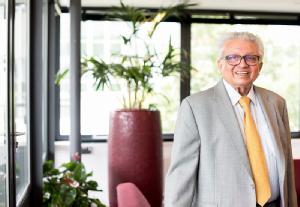 PROFESSOR LORD KUMAR BHATTACHARYYA Kt, CBE, FRS, FREng, Regius Professor of Manufacturing
PROFESSOR LORD KUMAR BHATTACHARYYA Kt, CBE, FRS, FREng, Regius Professor of Manufacturing
6th JUNE 1940 – 1st MARCH 2019
Early Years
Professor Lord Bhattacharyya’s long and highly accomplished career in engineering and manufacturing began with his studies in Mechanical Engineering at the Indian Institute of Technology in Kharagpur. He was awarded his Bachelor of Technology (BTech) degree by Kharagpur in 1960.
In 1961 he came to the UK to serve a six year graduate apprenticeship at Lucas Industries. This was followed by further studies and research at the University of Birmingham earning him a Master of Science (MSc) degree in engineering production and management, followed by a PhD in engineering production in 1970.
Lucas and the University of Birmingham clearly saw something special as he was quickly awarded a Lucas Fellowship at Birmingham. However, his acumen and ability soon became known to a great many other people. This included Lord (then just plain Jack) Butterworth who in 1980 persuaded him to move to the University of Warwick to found and lead what was to become WMG (formerly Warwick Manufacturing Group).
The range of people seeing something special in Kumar was not confined to his professional life, in 1981 he married Brigid Carmel Rabbitt, known to all as Bridie and together they set about restoring their home.
Just a few short years after WMG’s foundation the leadership of the embattled Austin Rover group, at British Leyland, turned to Lord Bhattacharyya and his new team for advice on adapting and innovating automotive design and professional development.
Read more here.

